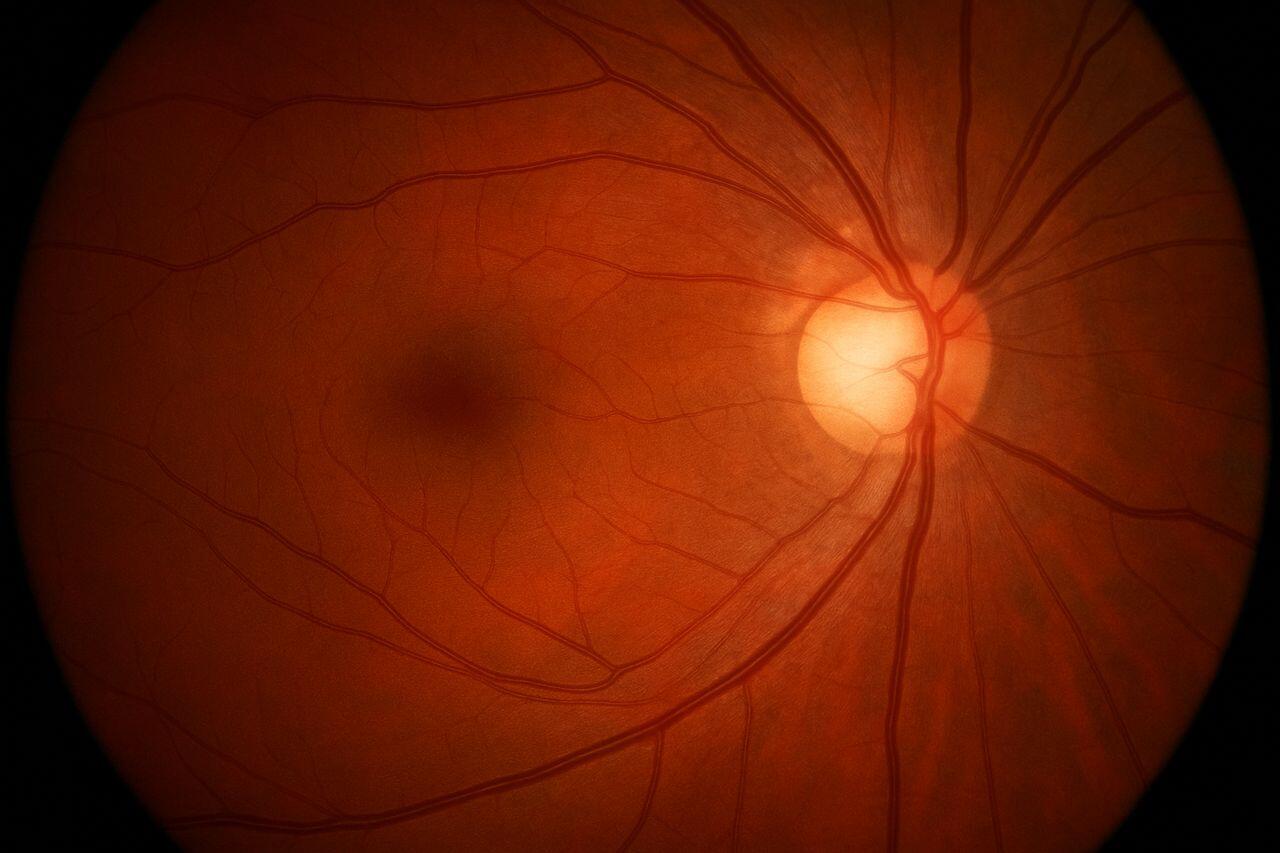
The role of the optic nerve in vision
Images on the nerve membrane of the eye are detected by the retina and converted into electrical impulses. These signals are transmitted by the optic nerve to the visual centre of the brain. If any factor interferes with the transmission of these signals – for example, inflammation, pressure or a blood supply problem – vision becomes distorted or impaired.
Who could be affected?
Optic neuropathy can occur at any age, but the middle-aged and elderly are particularly at risk, especially if other risk factors such as glaucoma, high blood pressure or diabetes are present. Childhood cases are rare, but can be caused by congenital malformations, trauma or inherited diseases.
Possible causes of optic nerve atrophy
Optic neuropathy can be caused by a number of different pathological processes. The most common ones can be grouped into the following categories:
- Vascular disorders – If the blood supply to the optic nerve is reduced, a state of oxygen deficiency can develop, leading to cell death. This can be temporary, but repeatedly can cause severe damage.
- Inflammatory origin – Inflammation affecting the nerve membrane and optic nerve (e.g. neuritis optica, autoimmune processes, MS) can also damage nerve fibres.
- Pressure boosting – An increase in intracranial pressure (e.g. tumour, brain oedema) or even an eye condition such as glaucoma can put increased pressure on the optic nerve.
- Toxic effects – Certain drugs, chemicals, alcoholism or vitamin B12 deficiency can also cause toxic neuropathy.
- Trauma – Head injuries, direct eye damage can also lead to nerve fibre damage.
In some cases the exact cause is not even known – this is called idiopathic optic nerve atrophy.
Symptoms and warning signs of optic nerve atrophy
The disease is barely noticeable at first and is often only detected when severe vision loss has already occurred. The narrowing of the field of vision is gradual and the patient often does not notice it because the other eye compensates for the loss for a long time.
Symptoms can include:
- blurred or distorted vision
- reduced visual acuity, especially in central vision
- impaired colour perception (mainly in the red-green range)
- “hazy” vision or a dark spot in the field of vision
- photosensitivity
- the appearance of blind spots in different parts of the visual field
Individually, these signs can be a serious warning, but together they can indicate a serious condition.
How is the diagnosis made?
A thorough ophthalmological examination can confirm the suspicion of optic nerve atrophy. The modern diagnostic tools available at Rapidus Optika (e.g. OCT, visual field testing, fundus photography) allow us to analyse the condition of the optic nerve in detail.
The following tests may be particularly important:
- visual acuity testing
- colour vision test
- fundus examination, using the pupil dilation method
- Optical coherence tomography (OCT) – to assess the fibrous tissue of the optic nerve
- perimetry (field of view test) – to map out the lost fields of view
- MRI – if cerebral or intracranial hypertension is suspected
Based on the results of these tests, the ophthalmologist can determine the extent of the damage and the possible underlying cause.
Treatment options
Once damage to the optic nerve has occurred, it cannot be reversed, so treatments are always aimed at stopping or slowing down the deterioration. The therapy used always depends on the underlying disease.
If the process is inflammatory in origin, steroidal anti-inflammatory or immunosuppressive drugs may be needed. In the case of a toxic cause, the first step is to eliminate the harmful substance, while vitamin B12 supplementation may be effective in the case of B12 deficiency. The increase in pressure caused by glaucoma can be reduced with special eye drops or surgery. Blood supply problems may also require cardiological monitoring and lifestyle changes.
Close ophthalmic control is essential in all cases.
Can optic nerve atrophy be prevented?
In some cases, yes – especially if the underlying underlying disease is detected and treated early. Regular eye screening is particularly important for people over 40 and those with chronic conditions (e.g. high blood pressure, diabetes). Adequate nutrient intake (especially vitamin B12), avoiding smoking, reducing stress and regular exercise can all contribute to maintaining healthy nerve fibres.

